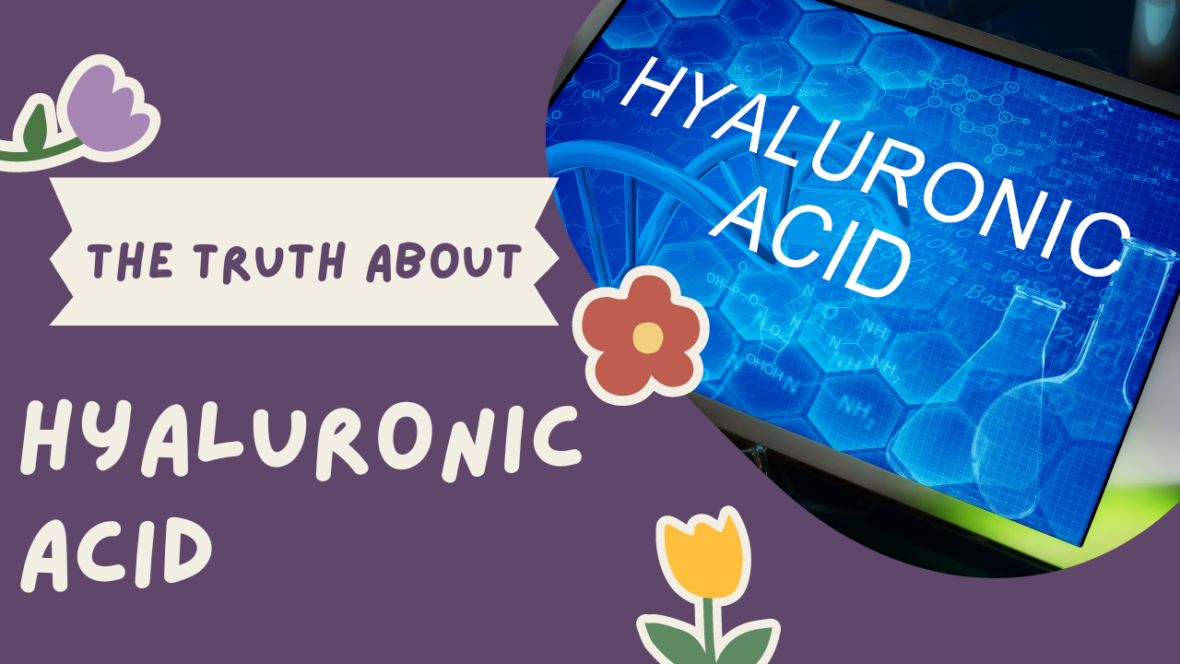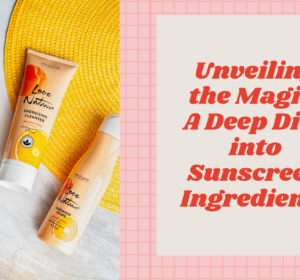Hyaluronic acid (HA) has become a ubiquitous term in the skincare world, touted as a miracle molecule capable of reversing the signs of ageing. But beneath the marketing hype lies a fascinating scientific story about a naturally occurring sugar molecule with remarkable properties. This in-depth exploration delves into the science of hyaluronic acid, its multifaceted benefits, and its potential role in maintaining youthful, healthy skin.
Update: Originally posted on Oct. 11, 2020

A Journey Through Time: Discovering Hyaluronic Acid
The discovery of hyaluronic acid dates back to 1934, when Karl Meyer and John Palmer, two scientists, isolated an unknown molecule from the vitreous humour, the gel-like substance that fills the eyeball. This newfound molecule possessed two unique sugar units (uronic acid being one of them), leading them to christen it “hyaluronic acid,” derived from the Greek word “hyalos” meaning “glassy” or “vitreous.” Recognizing its high viscosity, the researchers envisioned therapeutic applications for this novel molecule. However, extracting hyaluronic acid from bovine eyes proved to be a complex and expensive endeavour.
The quest for a more accessible source continued. In 1942, Endre Balazs, building upon Meyer’s methods, successfully extracted hyaluronic acid from rooster combs. This paved the way for further research, and by the 1970s, hyaluronic acid found its first use in ophthalmic surgery. Since then, its applications have expanded significantly, reaching far beyond the realm of eye care. Today, most commercially available hyaluronic acid is derived from bacterial fermentation processes, offering a more sustainable and cost-effective alternative.
The Science Behind the Hype: Understanding Hyaluronic Acid’s Structure and Function
Hyaluronic acid isn’t your typical acid. Despite its name, it doesn’t possess any acidic properties. It’s a glycosaminoglycan, a type of complex sugar molecule found throughout the body. Chemically speaking, this molecule is a long chain of repeating disaccharide units, each composed of N-acetyl-D-glucosamine and D-glucuronic acid. These disaccharide units are linked together in a specific alternating pattern, resulting in a unique helical structure. This intricate structure allows hyaluronic acid to bind vast amounts of water—up to 1,000 times its weight!
Hyaluronic acid plays a crucial role in various bodily functions. In the eyes, it helps maintain the shape and clarity of the vitreous humour, allowing light to pass through. Within the joints, hyaluronic acid acts as a lubricant and shock absorber, facilitating smooth movement and cushioning bones. However, the focus of this discussion lies in its significant contributions to skin health.
Hyaluronic acid is a vital component of the extracellular matrix, a complex network of molecules that provides structural support and maintains skin hydration. It exists in two primary forms in the skin: high-molecular-weight hyaluronic acid (HMW-HA) and low-molecular-weight hyaluronic acid (LMW-HA). HMW-HA resides in the deeper layers of the skin, where it contributes to plumpness and elasticity. LMW-HA, on the other hand, is found closer to the skin’s surface and plays a more direct role in hydration by attracting and retaining water molecules.
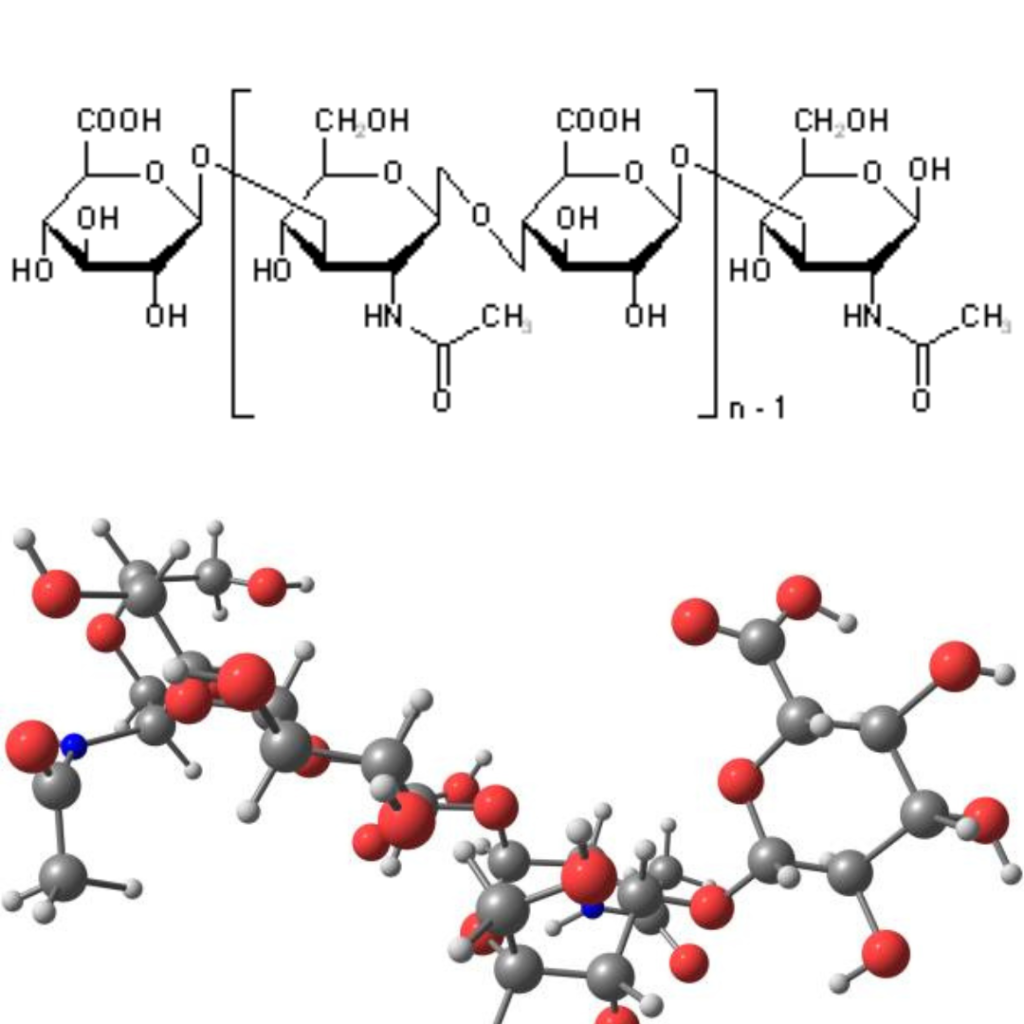
The Fountain Within: How Hyaluronic Acid Benefits the Skin
The ability of hyaluronic acid to bind immense quantities of water is central to its multifaceted benefits for the skin. Here’s a closer look at how this remarkable molecule can enhance your complexion:
Hydration Hero
As we age, our natural production of hyaluronic acid declines. This decrease in hyaluronic acid contributes to dry, dehydrated skin, characterized by flakiness, fine lines, and a dull appearance. The topical application of hyaluronic acid products directly addresses this issue. By replenishing the skin’s hyaluronic acid content, these products attract and retain water molecules, leading to plump, hydrated, and revitalized skin.
Humectant Powerhouse
Hyaluronic acid doesn’t just attract water; it also helps prevent its evaporation. Unlike occlusive agents that form a barrier on the skin’s surface to trap existing moisture, hyaluronic acid acts as a humectant. It draws water from the deeper layers of the skin and the surrounding environment, constantly replenishing the skin’s moisture reservoir. This continuous hydration leads to a smoother, more supple appearance.
Barrier Booster
A healthy skin barrier is essential for maintaining optimal hydration and protecting the skin from external aggressors. Hyaluronic acid plays a role in strengthening the skin’s barrier function by supporting the production of essential components like ceramides. This improved barrier function prevents water loss and further enhances the skin’s ability to defend itself against environmental damage.
Potential for Anti-Aging Effects
While hyaluronic acid itself doesn’t directly “erase” wrinkles, its hydrating and plumping properties can significantly improve the appearance of fine lines and wrinkles. By replenishing moisture and promoting skin cell turnover, hyaluronic acid may contribute to a more youthful and radiant complexion. Additionally, some studies suggest that hyaluronic acid might stimulate collagen production, a protein essential for maintaining skin structure and elasticity. However, further research is needed to fully understand the extent of hyaluronic acid’s impact on collagen synthesis.
Soothing Savior
Hyaluronic acid’s anti-inflammatory properties may offer relief for individuals with dry, irritated, or sensitive skin. Its ability to hydrate and soothe the skin can potentially reduce redness and discomfort associated with these conditions.
Wound Healing Potential
Studies suggest that hyaluronic acid may play a role in wound healing by promoting cell migration and proliferation. Topical application of hyaluronic acid may accelerate wound closure and minimize scarring.
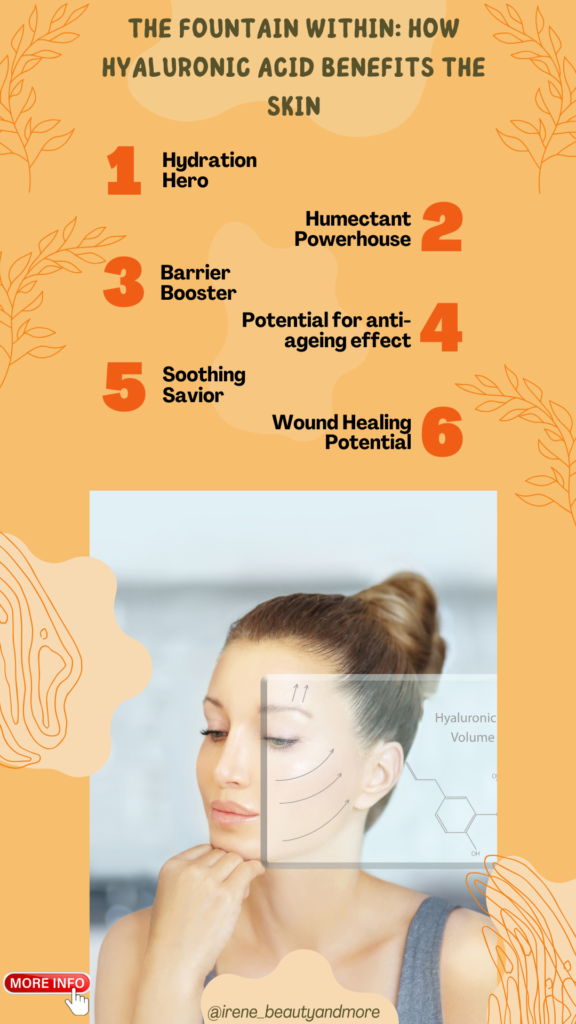
Beyond the Face: Exploring the Diverse Applications of Hyaluronic Acid
Hyaluronic acid’s benefits extend far beyond the realm of skincare. Here are some additional applications of this versatile molecule:
Joint Health: Hyaluronic acid injections are used to treat osteoarthritis, a degenerative joint disease. These injections help lubricate the joints and reduce pain and inflammation.
Eye Care: Hyaluronic acid is a component of artificial tears, providing lubrication and relief for dry eyes.
Tissue Regeneration: Hyaluronic acid plays a role in tissue regeneration and wound healing, contributing to various medical procedures.
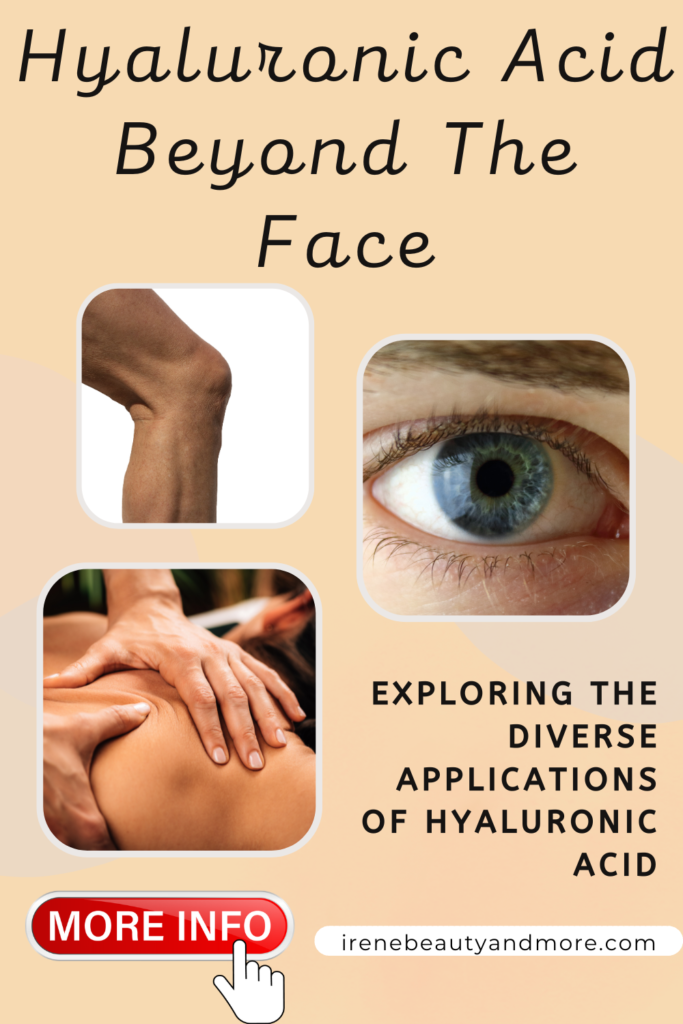
Navigating the Hyaluronic Acid Maze: Choosing the Right Product
Hyaluronic acid has become a mainstay in the skincare industry, with a vast array of products available. Here’s a breakdown of different types of hyaluronic acid products and factors to consider when making your choice:
Product Forms
Hyaluronic acid comes in a variety of formats, each with its own advantages:
Creams: Creams offer convenient daily hydration and can be used alone or layered with other skincare products. Look for creams with hyaluronic acid listed near the top of the ingredients list for a higher concentration.
Serums: Serums often contain a higher concentration of hyaluronic acid compared to creams and penetrate deeper into the skin. However, they may require additional moisturization.
Ampoules: Ampoules are concentrated, single-dose treatments offering an instant moisture boost. They’re ideal for special occasions or to address immediate hydration needs.
Masks: Hyaluronic acid-infused masks provide intensive hydration and can be a great way to pamper your skin.
Molecular Weight
Hyaluronic acid comes in different molecular weights, each with varying properties:
High Molecular Weight Hyaluronic Acid (HMW-HA): Works best to plump the skin and improve elasticity, residing in the deeper layers.
Low Molecular Weight Hyaluronic Acid (LMW-HA): Penetrates deeper into the skin and has a stronger ability to attract and bind water.
Some products contain a combination of both HMW-HA and LMW-HA to deliver a comprehensive range of benefits.
Skin Type
Hyaluronic acid is generally suitable for all skin types. However, for oily skin, choose oil-free formulations. Sensitive skin types may benefit from fragrance-free products.
Unlocking the Power of Hyaluronic Acid: Application Tips and Best Practices
To maximize the benefits of hyaluronic acid, consider these application tips:
Apply hyaluronic acid to damp skin. This allows the hyaluronic acid to draw moisture from the environment as well as your skin’s deeper layers.
Layer hyaluronic acid with other skincare products. Pair hyaluronic acid with a moisturizer to lock in hydration.
Store hyaluronic acid products in a cool, dry place. Heat and sunlight can degrade the effectiveness of hyaluronic acid.
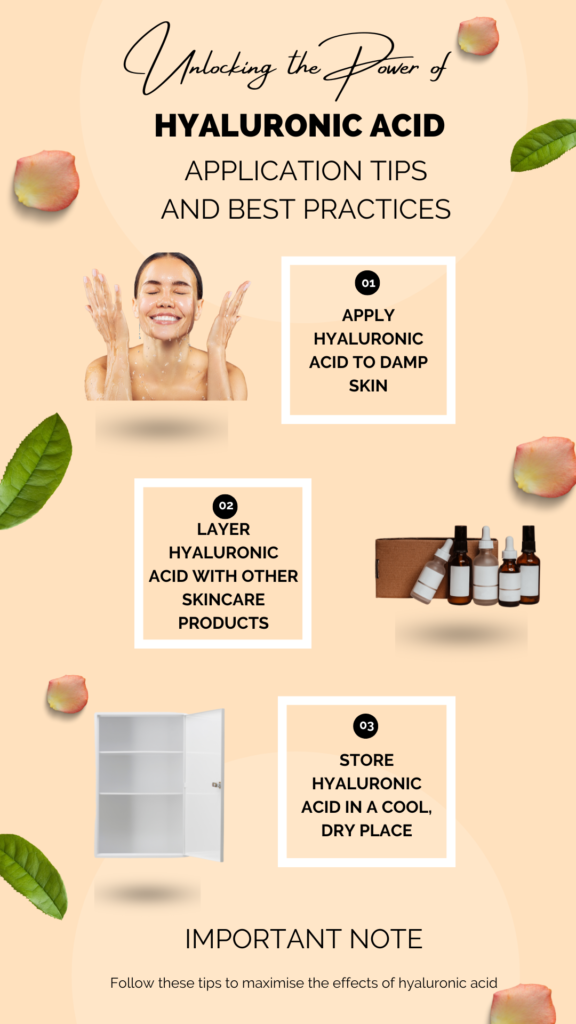
My favourite hyaluronic acid products
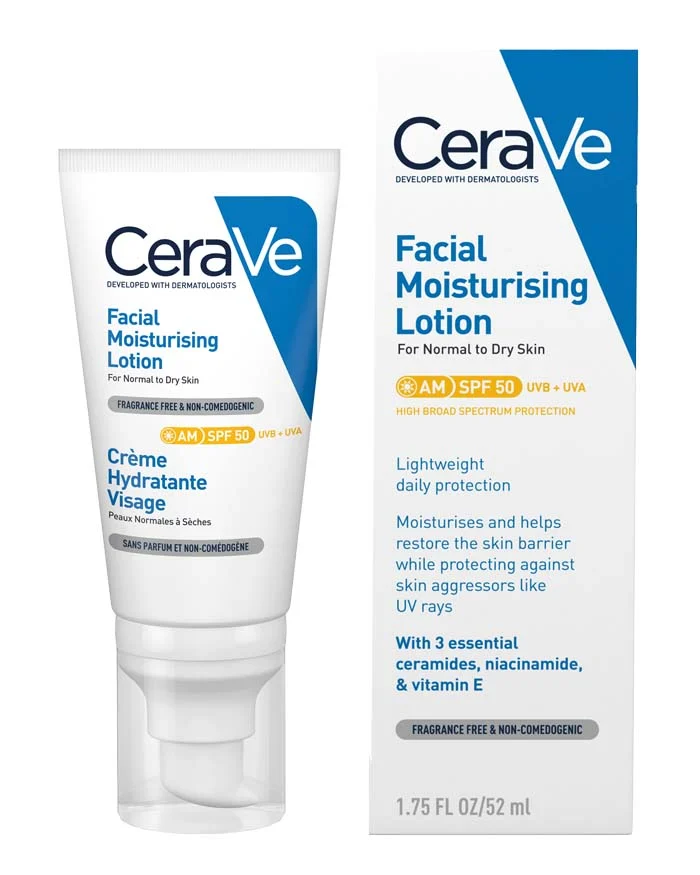
Cerave Facial Moisturizing Lotion AM
This fragrance-free, oil-free lotion is a great option for all skin types, including sensitive skin. It contains hyaluronic acid along with ceramides and niacinamide to deeply hydrate and strengthen the skin barrier. This lotion is formulated for daytime use and contains SPF to protect your skin against UV radiation.
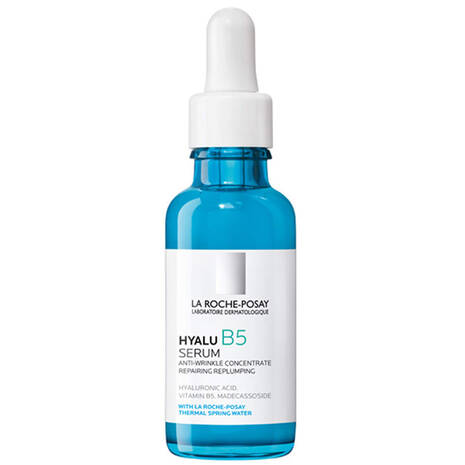
La Roche-Posay Hyalu B5 Serum
This lightweight serum features a high concentration of both high molecular weight and low molecular weight hyaluronic acid, offering comprehensive hydration benefits. It also contains vitamin B5 (panthenol), an ingredient known for its soothing and repairing properties. This fragrance-free serum is ideal for normal, dry, or dehydrated skin and can be used both in the morning and at night.
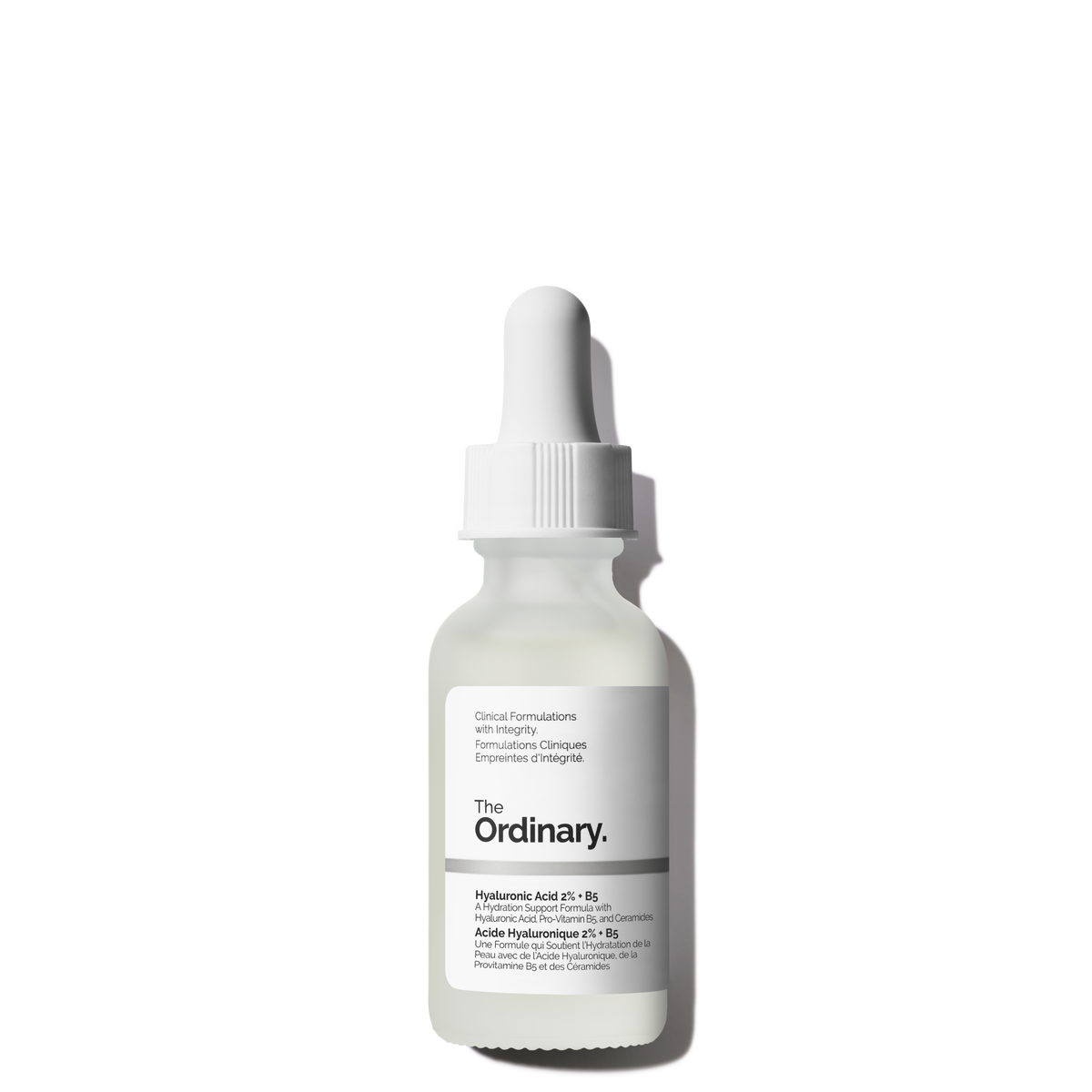
The Ordinary Hyaluronic Acid 2% + B5
This budget-friendly serum offers a potent dose of hyaluronic acid along with vitamin B5. The simple formulation is perfect for those looking for a no-frills approach to hydration. It’s best suited for normal, oily, or combination skin types. Apply a few drops to damp skin after cleansing and before moisturising in your morning and evening routines
The Verdict: Hyaluronic Acid: Worthy Investment or Overhyped Fad?
While hyaluronic acid isn’t a magic bullet for reversing the ageing process, it offers a wealth of benefits for the skin. Its ability to hydrate, plump, and potentially support skin barrier function makes it a valuable addition to most skincare routines. Whether you’re looking to combat dryness, minimize the appearance of fine lines, or soothe sensitive skin, hyaluronic acid might be worth exploring.
However, it’s important to maintain realistic expectations. Hyaluronic acid won’t completely eradicate wrinkles or erase signs of ageing. Additionally, some individuals may not experience dramatic results, possibly due to factors like skin type or product formulation.
The key to success lies in a holistic approach to skincare. A combination of a healthy diet, adequate sleep, sun protection, and a well-rounded skincare routine that includes hyaluronic acid can contribute to a healthy, radiant complexion.
Do you use hyaluronic acid in your skincare routine? Share your experiences and product recommendations in the comments below! Together, let’s explore the world of hyaluronic acid and unlock its potential for beautiful, healthy skin.
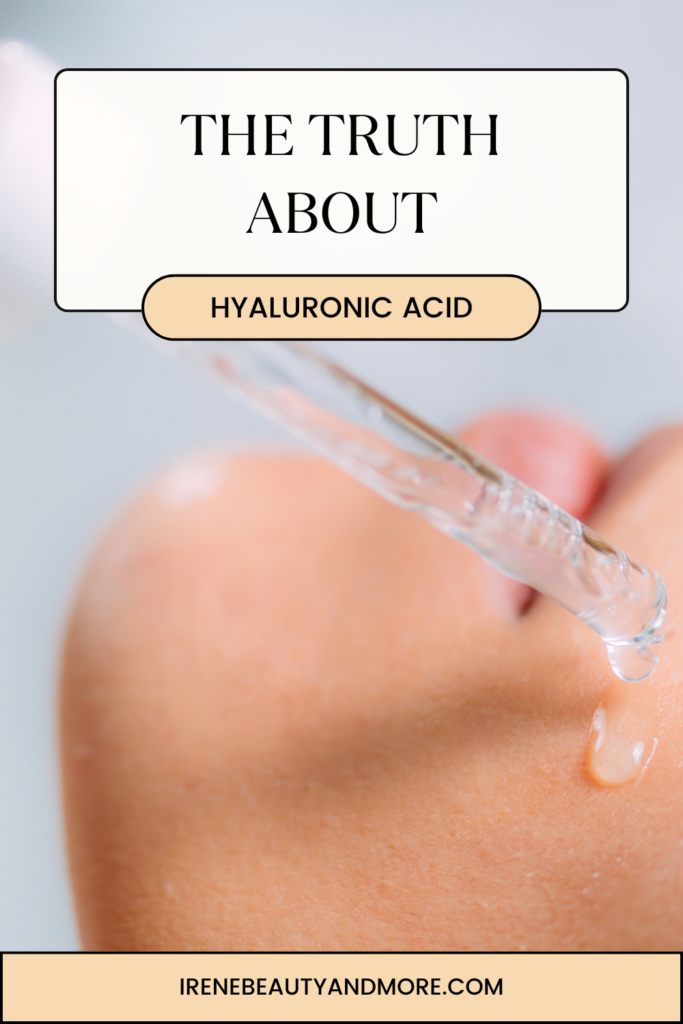
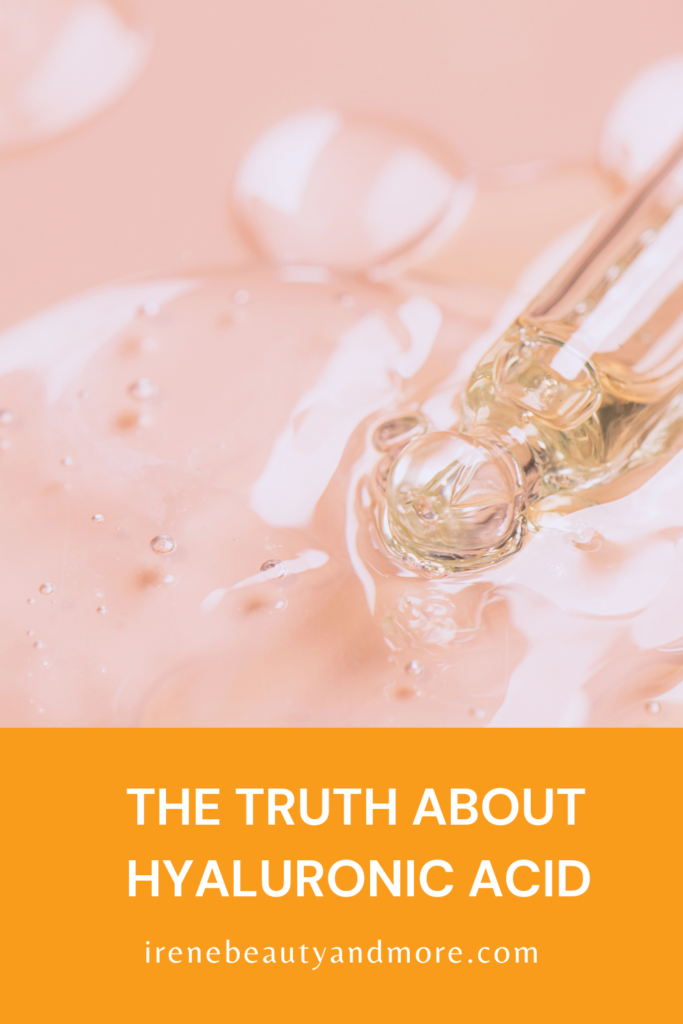
Bear in mind that some of the links in this post are affiliate links and if you go through them to make a purchase I will earn a commission. Keep in mind that I link these companies and their products because of their quality and not because of the commission I receive from your purchases. The decision is yours, and whether or not you decide to buy something is completely up to you.
